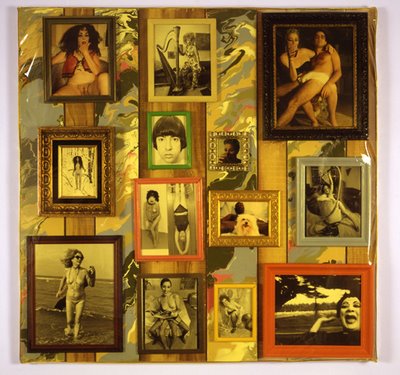 Photo Composition "I'm Stuck" 2003
Photo Composition "I'm Stuck" 2003 Unit 2000
Unit 2000 Her Unit 2002
Her Unit 2002Robert Melee at Andrew Kreps Gallery


Tibet is an artist that works entirely underground (literally) in Stockholm, Sweden. All of his work is done only in the most hidden of places, and very few people will ever get to see it. Each statue is made of concrete and are 11" tall and weigh about 5 pounds each. They are glued, welded or drilled into the solid rock and will stay there for a very, very long time.
You can see more photos here.
 Urn and paint, Western Han Dynasty (206 BC - 8 AD)
Urn and paint, Western Han Dynasty (206 BC - 8 AD) "June 1994" 1994
"June 1994" 1994  "White House" 1999
"White House" 1999 Ayrt is a "game of intelligence", says Ai Weiwei, alluding to his own practice - a body of works over more than the last twenty years in varied media and diverse forms. And to this game, in which he moves freely between cultural and historical sources he devotes himself with the intensity of a child first beginning to make sense of the world, pushing the boundaries of his resources and intelligence to the limit....Social intercourse examined in contemporary history is an issue the artist toyed with in his earlier works such as June (1994), a b/w picture of a young woman hoisting up her skirt in front of the façade of the Forbidden City; Violin (1985), an installation, referring to Duchamp's In Anticipation of a Broken Arm, in which the neck of a violin is substituted with the handle of a shovel; Propaganda Poster (1993), where Ai retouched a government propaganda poster against the use of firecrackers; Study of Perspective (1995-2003), a set of eight photographs dominated by an ever-present close-up of a middle finger raised against worldwide famous political and cultural landmarks such as the Forbidden City, the Reichstag and the White House.
by Nataline Colonnello full text here
Ai Weiwei at Galerie Urs Meile


 Le Jardin Secret
Le Jardin Secret“A group of people pass through the forest, bird-watching. Their excursion, which provides a way of escaping reality and seeking the beauty of existence, lasts from early morning till late at night. As the cyclical tour advances, the atmosphere becomes unclear, the people ultimately transformed into wanderers. They hang around a place, stirring under leaves, knocking at trees. Occasionally someone disappears in the woods for a period of time, only to join the group again in another forest. Now and then an animal appears, observed by the group, while mist starts to rise and fill all the screens, followed by a mini-drama. The plot brings about a sense of uncertainty and threat. With the end of a mini-drama, the image automatically returns to the wandering in the woods. It is a tour doomed to failure, in which the inability to change the status quo is translated into attempts to talk to birds and nature. ... (source)

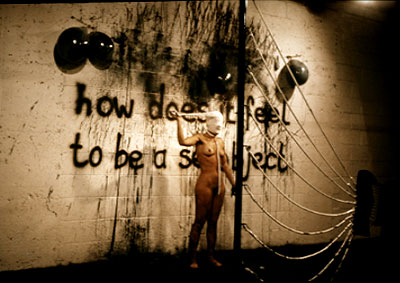 Sexobject performance, 1979
Sexobject performance, 1979Lydia Schouten was born in 1948 in Leiden, the Netherlands, and moved to Rotterdam in 1971 where she still lives and works. From 1978 onwards, Schouten's work can be divided into three periods: an exploration of performance art from 1978 to 1981; a period of work in video from 1981 to 1988; and since then, an ongoing interest in installation, often combining video, sound and photographic components. In all three periods certain thematic elements are apparent at Schouten's work. Femininity, isolation and the relation of mass media with sex and pornography are a few of the most frequent ones.
dubbel
 Le Jardin secret (The Table)
Le Jardin secret (The Table)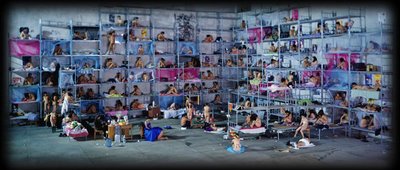
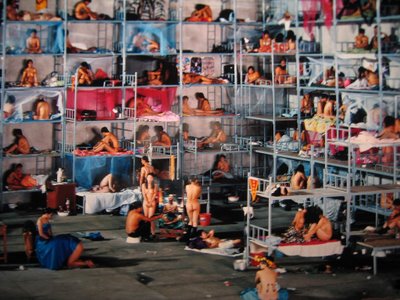
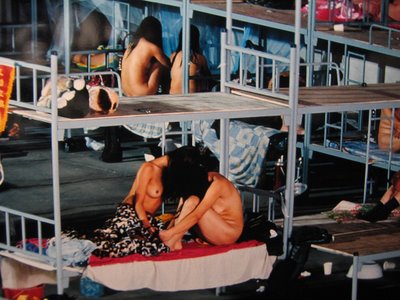 click pics for a larger view
click pics for a larger viewEveryone appears full of aspiration and seems satisfied with the achievements of reform and rapid development, which are expressed in the Chinese slogan, "One change a year, one big change in three years, and one unidentifiable transformation in five years." Capitalism has "modernized" our formerly agricultural country. .. This rich contemporary China provides me with a huge resource for artistic inspiration. To sing highly of this new, sweeter-than-honey life of glory, I use theatrical techniques and let the camera narrate true and understandable contemporary stories.
Wang Qingsong
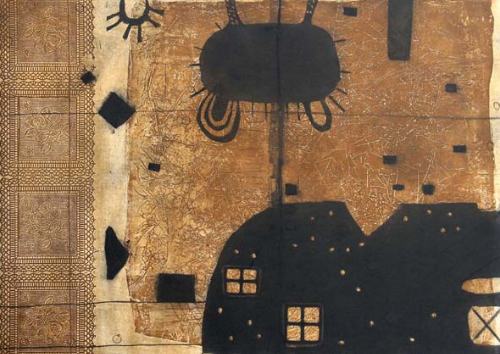

The reading of the visual discourse of the young graphic artist Anka Danailovska is a particularly subtle and serious act for the adult observer. His/her reception and relation – and, as we said, such an approach refers to the adult observer in particular – should be mentally adapted to the object of observation since the discourse of this écriture belongs to another world, a world different from that of the adults. The configuration of the subtly conceived surreal and fantastic world of fairy tales and of the voracious and impatient eye which fretfully wanders over the surface of her works proposes to the observer a child’s perspective.
Through the simulation of the innocent but controlled childlike discourse impressed into or drawn on her recent prints and pastels, Anka Danailovska turns to the re-designing of her fairy tales illustrated or painted long ago. In her work, this principle symbolizes weaving a new cloth with old yarn, i.e., an instance of unique self-quotation and self-compilation.
Konča Pirkoska art critic, Translator : Rajna Koska.
read more
Anka Danailovska -
"From the Pages of Fairy Tales"
27.10. - 16.11.2006
Prima Center Berlin
Biesentalerstr. 24, 13359 Berlin
opening: october, 27th, 8pm

Mohammed Yunus and his Grameen Bank won the Nobel Peace Prize some days ago. In the 1970's Yunus pioneered the use of micro-loans to give rural entrepreneurs in the developing world start-up capitol needed for their small businesses. Today exists several projects that offer microcredits, among them Kiva which is of special interest as it allows people like us to offer micro loans. The concept is as simpls as charming, Kiva's p2p network enables ordinary people to loan small sums of money through PayPal to needy individuals. As CNNmoney puts it: "If you've got 25 bucks, a PC and a PayPal account, you've now got the wherewithal to be an international financier."
Esther Asekenye pictured here is one of many businesses seeking support on the kiva page:Asekenye Esther is a married lady with three children and three other dependants. She deals in sewing women and children’s clothes and she also sells new pieces of clothes (mostly using kitenge material made out of cotton). She sells to ladies who come to buy from her and she makes them right there for them to satisfy their specific needs. She has a passion for fashions and designs. She is a very hard working lady and a qualified tailor. She operates her business in Mbale town and it has successfully been operating for four years now.
She began her business with the capital she received from selling her grandaunt, cassava and rice, which she had planted with that motive, which enabled her to purchase a sewing machine and also purchase some pieces of materials for sale. She has received many customers, especially women, and she gets good profits and her turn over is not so bad. The A-tier she makes is one of the most decent (modern) fashions that ladies wear, especially in Mbale and Uganda at large.
She is requesting a loan worth $500, to expand and boost up her business by purchasing more materials. She also wishes to add on more sewing machines so she is able to earn more profits for helping her family to meet some of their demands and also pay fees for the orphans who stay with her.
$250 have been loaned so far.
kudos to sum1 for bringing back kiva to our mind
Daily Kos has some more about Kiva
 The Fun of Zen, 2004, Ink on paper, 72 1/2" x 57" (184 x 145 cm)
The Fun of Zen, 2004, Ink on paper, 72 1/2" x 57" (184 x 145 cm)In writing, a calligrapher’s attentions are directed toward a number of elements: brushwork, ink, composition, rhythm, vitality and the characters themselves. Exhaustive repetition of characters lies at the center of all calligraphy lessons, and after years of training these elements become ingrained. Wang's single characters reveal the power of his calligraphic brushstrokes; combined with painting they produce a complex, visually stunning and highly unique aesthetic.
While Wang’s training and artistic development may be rooted in tradition, his work has emerged as audaciously modern, and has grown out of his exposure to cosmopolitan and international sources.
Wang's latest abstract works draw their strength and integrity from traditional aesthetics and metaphysics. Suggestions of landscape or natural forms may be present but these paintings are primarily physical manifestations of energy, emotion and life and have effectively dissolved the distinction between painting and calligraphy. (gallery text)

In the shadow of Saturn, unexpected wonders appear. The robotic Cassini spacecraft now orbiting Saturn recently drifted in giant planet's shadow for about 12 hours and looked back toward the eclipsed Sun. Cassini saw a view unlike any other. First, the night side of Saturn is seen to be partly lit by light reflected from its own majestic ring system. Next, the rings themselves appear dark when silhouetted against Saturn, but quite bright when viewed away from Saturn and slightly scattering sunlight, in the above exaggerated color image. Saturn's rings light up so much that new rings were discovered, although they are hard to see in the above image. Visible in spectacular detail, however, is Saturn's E ring, the ring created by the newly discovered ice-fountains of the moon Enceladus, and the outermost ring visible above.
Far in the distance, visible on the image left just above the bright main rings, is the almost ignorable pale blue dot of Earth (click pic for a slightly bigger version).
This beauty appeared as the astronomic pic of the day, three days ago on october 16th.
You can get a high-rez version that is worth the wait here.
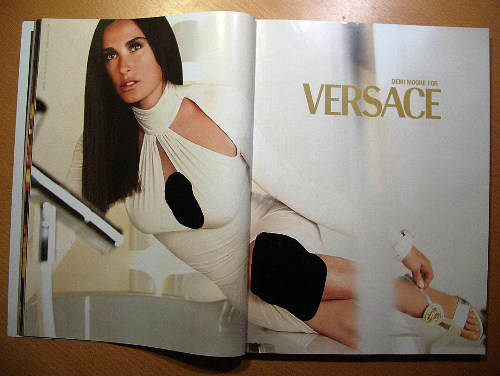
 click pics for high rez
click pics for high rezWhile many western readers will be quiete sure that the media in Iran is heavily censored there is doubt that many have actual an idea how this censorship appears. Jonathan Lundqvist of j|turn had been in Iran and took the chance to take a closer look at some western magazines avaiable in Teheran. The mags he bought, many more are avaiable, are Economist, National Geographic and Wallpaper.
Especially the specific issue of the Economist is of interest as it´s cover story is about Iran´s nuclear ambitions. The entire magazine is full of articles that are extremely critical to the regime. Leaders and op-ed’s that say that the Iranian regime is outright dangerous. Yet, that is not censored. Not one world of it. It’s all there.
One of the more interesting things with all this, as Jomnathan points out, is how words are left uncensored, but images are not. The only word that was explicitly censored was “Playboy”, in spite of the articles being full of things that must be considered western propaganda.
From a westerner’s point-of-view, the censorship can be described in terms of political and/or sexual. The political censorship is the cartoons of the religious and worldly leaders, and the sexual being primarily the female body and some of its attributes. It’s important, however, to remember that women are not censored to the standard that is expected in the real world: in the Iranian society the hair is supposed to be veiled from a strangers gaze – in these images its left untouched and visible. Thus, it can be argued that there is a degree of tolerance that goes beyond what is normally considered acceptable and that censors target the Iranian equivalent of hard-core pornography.
Jonathan concludes that the Iranian censorship is better than other forms of censorship, in that it’s done in the open. The black ink is there for all to see. No pages that “disappeared”, but the evidence of interference is there. That way, Iranians at least know that they’re missing out and can act accordingly.
I am not sure if I agree with the latter, as I feel uncomfortable with describing one censorship better than the other but his extensive collection of scanned magazines gives a first hand impression of the media in Iran that may adjust some pictures in mind.
full post here: More pictures of Iranian Censorship

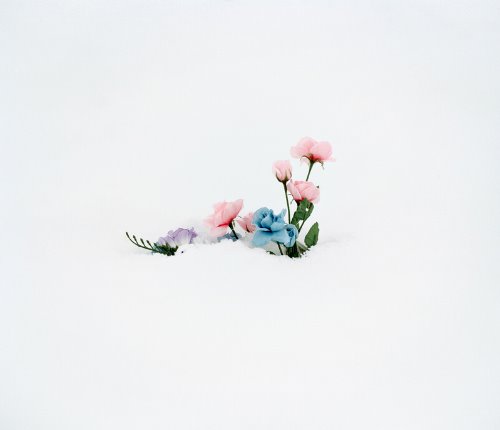

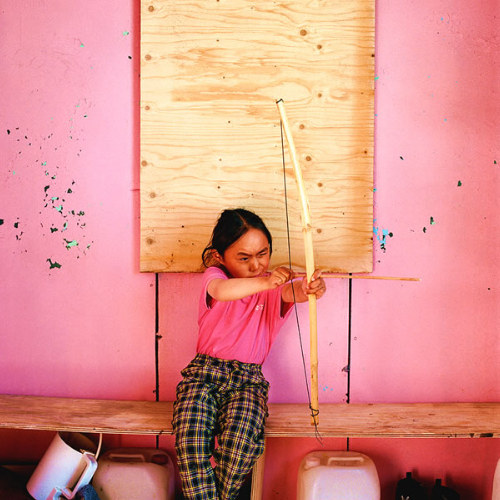
Since the beginning of the 1990s, I have been searching for my own Ultima Thule, my place in the Far North. I was enchanted by the story of the Mother of the Sea and, in 1995, it inspired me to set off for the place where the story originated in Greenland. My search for the Mother of the Sea took me to the Polar Eskimos of the northernmost part of Greenland. The lack of haste, the friendliness of the people, the silence of the glaciers and the peace of the landscape compelled me to return to Northwest Greenland in 1998, 2002 and 2005.
On my first trip to Greenland, I was told I would definitely be coming back. According to a Greenlandic tale, a human being can turn into a qivigtoq, run around the fells, live there, and finally die there. My desire to return to Greenland goes beyond reason. On my third trip there I tried to shake off this madness and leave it wandering in the northern landscapes, like a qivigtoq. I did not succeed".
Tiina Itkonen
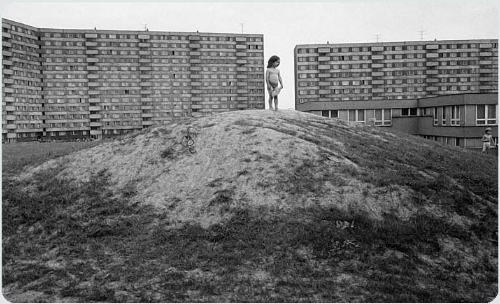 Victor Kolar
Victor Kolar Henryk Ross, Children of the ghetto. Playing as ghetto policemen, 1940-1944
Henryk Ross, Children of the ghetto. Playing as ghetto policemen, 1940-1944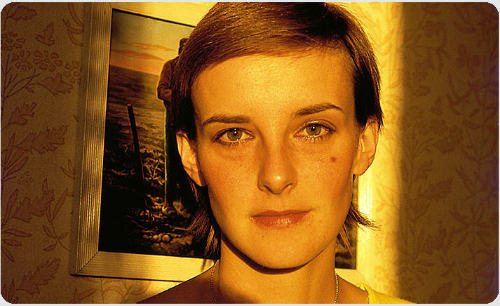 Seiichi Furuya, Berlin-Ost, 1985
Seiichi Furuya, Berlin-Ost, 1985 Jitka Hanzlová, Untitled, 2004, from Forest, 2005
Jitka Hanzlová, Untitled, 2004, from Forest, 2005In the Face of History: European Photographers in the 20th Century:
One of the first major exhibitions to chart European photography from 1900 to the present day, In the Face of History features classic photographers such as Eugène Atget, Josef Sudek and Brassaï , alongside contemporary artists such as Boris Mikhailov, Jitka Hanzlová and Wolfgang Tillmans. The exhibition includes a number of photographers from the former Eastern bloc, with many works shown in the UK for the first time.
All of the photographers are distinguished by a closeness to their subject matter, sometimes depicting these subjects during times of great conflict. André Kertész documented the realities of a soldier’s life while serving in the Austro Hungarian army in the Great War. Henryk Ross, meanwhile, is represented by a series of shocking images which he took in secret while imprisoned in the Lodz ghetto in Poland during World War Two.
Other photographers depict subtler currents of social and cultural change. Christer Strömholm lived amongst, and documented, a community of transsexuals in Paris in the 1960s. Annelies Štrba shows photographs of her children’s lives taken over a thirty year period.
In the Face of History contains many powerful works, images distinguished by the emotional bond between photographer and subject, offers a unique perspective on a century, as seen through the eyes of some of Europe’s greatest photographers.
(gallery text)
In the Face of History: European Photographers in the 20th Century
13 October 2006 - 28 January 2007
Barbican Art Gallery
Barbican Centre
Silk Street London
via
Daisyworld, a computer simulation, is a hypothetical world orbiting a sun whose temperature is slowly increasing in the simulation. Daisyworld was introduced by James Lovelock and Andrew Watson to illustrate the plausibility of the Gaia hypothesis in a paper published in 1983.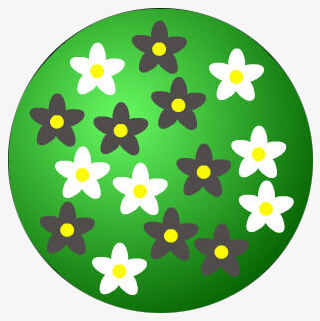
In Daisyworld, a planet orbits a star whose energy output is slowly and steadily increasing over time. This world has two life forms—white daisies and black daisies—which grow upon its surface. 
The black daisies absorb solar energy efficiently, being black, while the white daisies reflect solar energy efficiently. At the beginning of the simulation, the global temperature is so cold that only black daisies can absorb enough heat to survive.
Increased numbers of black daisies cause the temperature to rise, at which point the reflective white daisies can survive and compete. 
At some point an equilibrium of temperature arises, wherein the shifting daisy populations are able to maintain a static temperature in spite of increasing solar energy.
Eventually, near the end of the simulation, the heat overwhelms the entire population and life dies out.
The really interesting thing about Daisyworld is that, in later, more complex, and more realistic models, when higher-level species such as foxes and rabbits were introduced to create elementary food chains, the ability of Daisyworld to maintain equilibrium increased. In fact, the more species that were added to the world, the better Daisyworld seemed to be able to regulate its temperature! These findings were very important in the development of an understanding that biodiversity is important to planetary ecology. Species compete brutally at an individual level, but nevertheless all share a very real interest in the proliferation of new species which will in turn have to compete with them. more
Mostly quoted from a short description of the Daisy world and the Gaia Hypotheses by Curt Lindsay who´s conclusion can be best summarized in a t-shirt by Tammy:
Good Planets are Hard to Find
 Untitled So Far - 2006
Untitled So Far - 2006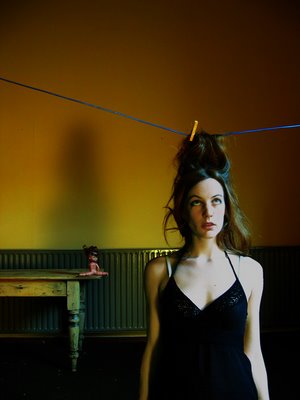 Hanged Self - 2006
Hanged Self - 2006 Self-Portrait Wityh Orange Phone - 2005
Self-Portrait Wityh Orange Phone - 2005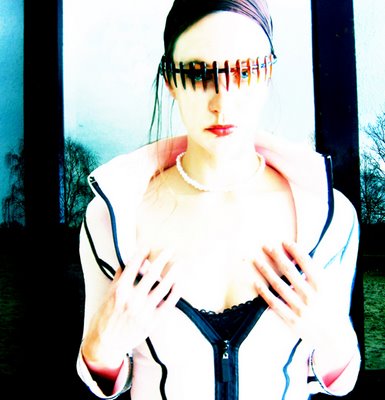 A Second Before Disappearing into a Void - 2006
A Second Before Disappearing into a Void - 2006 A Nightmare: Heat me-So cold - 2006
A Nightmare: Heat me-So cold - 2006Rachel Stone was born in 1976 in the city of Schiedam in the Netherlands. She did a four year co-op with sculptor Miquel Penso and currently lives in Nijmegen.
"In my work I use mostly myself as a model. I achieve my effects first of all with my camera and then work on them when needed in photoshop. My inspirations come from everything I hear and see which immediately translates itself in a never ending flow of images, sometimes hard to keep up with so I am in the habit of writing them down now."
"I have two methods of working; One is the intuitive one where I get a certain feeling, collect materials and set up the scene in a short period of time. Examples of this type are the rosa series, the self portrait with orange phone, tea before I go and tea with me."
"The other method is working on a pre-conceived idea or concept. Examples are: the ten seconds exposure time series, scream free of fish, prometheus, untitled so far, lover's lament and the nightmare series."
read and see more from Rachel Stone at the Lilith gallery